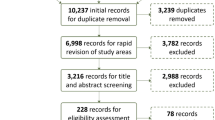Abstract
This study examined the knowledge levels of Mississippi Non Industrial Private Forest (NIPF) landowners. Data were collected by passing out surveys to participants in Best Management Practices (BMP) educational programs held in conjunction with County Forestry Association (CFA) meetings across Mississippi. Ten CFA's participated in this study. Educational program participants were asked to fill out a survey with several demographic and BMP questions prior to the educational program. Results show that BMP program participants owned an average of 113 hectares, whereas the average Mississippi NIPF landowner owns 20 hectares. Responses to BMP related questions show that Mississippi NIPF landowners have a low level of knowledge concerning BMP's. This situation is likely similar to other states in the Southeastern United States. It can be assumed that county forestry association members are more active and informed about managing their forest land. Therefore, these results may overestimate the BMP knowledge level all landowners in Mississippi.Improved educational programs for NIPF landowners, along with better communication between foresters, loggers, and NIPF landowners are needed if BMP's are to be implemented effectively in Mississippi and across the southern region.
Similar content being viewed by others
References
Adams, T. O.: 1998, ‘Implementation monitoring of forestry best management practices for site preparation in South Carolina’, South. J. Appl. For. 22(2): 74–80.
Arano, K. G., Cushing, T. L. and Munn, I. A.: 2002, ‘Forest management expenses of Mississippi's nonindustrial private forest landowners’, South. J. Appl. For. 26(2): 93–98.
Aust, W. M., Burger, J. A., Carter, E. A., Preston, D. P. and Patterson, S. C.: 1998, ‘Visually determined soil disturbance classes used as indices of forest harvesting disturbance’, South. J. Appl. For. 22(4): 245–250.
Aust, W. M., Shaffer, R. M. and Burger, J. A.: 1996, ‘Benefits and costs of forestry best management practices in Virginia’, South. J. Appl. For. 20(1): 23–29.
Briggs, R. D., Cormier, J. and Kimball, A.: 1998, ‘Compliance with forestry best management practices in Maine’, North. J. Appl. For. 15(2): 57–68.
Forest Resources Association: 2002, ‘Eighth report on the status of statewide logger training and education programs in thirty-two forested states’, Technical Paper 02-A-2, Forest Resources Association, Rockville MD, 74 pp.
Grado, S. C., Measells, M. K., Habig, R. B. and Capella, L. M.: 2002, Values, Attitudes, and Perceptions of Forest Industry Constituency Groups, Forest and Wildlife Research Center, Research Bulletin FO 211, Mississippi State University, 22 pp.
Kluender, R., Weigh, R., Corrigan, M. and Pickett, J.: 2000, ‘Assessing the operational cost of streamside management zones’, Forest Prod. J. 50(2): 30–34.
Lickwar, P., Hickman, C. and Cubbage, F. W.: 1992, ‘Costs of protecting water quality during harvesting on private forestlands in the Southeast’, South. J. Appl. For. 16(1): 13–20.
Lickwar, P. M., Cubbage, F. W. and Hickman, C. A.: 1990, ‘Current southern state programs for control of forestry nonpoint source pollution’, South. J. Appl. For. 14(64–69).
Londo, A. J.: 2000, ‘The effects of forest fragmentation on forest management for Mississippi private non-industrial forest landowners’, in L. E. Decoster (ed.), Proceedings of the Forest Fragmentation 2000 Conference, Sampson Group, Inc. Alexandria Va, pp. 125–134.
Londo, A. J. and Mroz, G. D.: 2001, ‘Bucket mounding as a mechanical site preparation technique in wetlands’, North. J. Appl. For. 18(1): 7–13.
Mississippi Forestry Commission: 2000, Mississippi's Best Management Practices for Forestry, MFC publication 107, Jackson, MS, 36 pp.
NCASI: 1994, Forests as Non-Point Sources of Pollution, and Effectiveness of Best Management Practices, Technical Bulletin. No. 672, 57 pp.
Schaffer, R. M. and Meade, G. S.: 1997, ‘Evaluation of harvest planning training’, For. Prod. J. 47(7/8): 69–71.
Schuler, J. L. and Briggs, R. D.: 2000, ‘Assessing application and effectiveness of forestry best management practices in New York’, North. J. Appl. For. 174): 125–134.
Seyedbagheri, K. A.: 1996, ‘Idaho forestry best management practices: Compilation of research on their effectiveness’, USDA Forest Service, Gen. Tech. Rep. INT-GTR-339, 89 pp.
Author information
Authors and Affiliations
Corresponding author
Rights and permissions
About this article
Cite this article
Londo, A.J. An assessment of Mississippi's nonindustrial private forest landowners knowledge of forestry BMP's. Water, Air, & Soil Pollution: Focus 4, 235–243 (2004). https://doi.org/10.1023/B:WAFO.0000012816.68233.73
Issue Date:
DOI: https://doi.org/10.1023/B:WAFO.0000012816.68233.73




